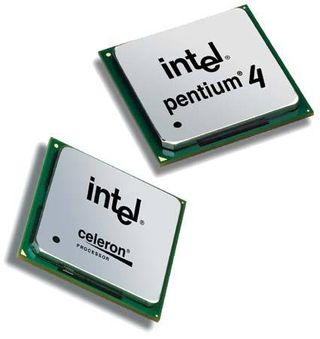Battling Brothers: Celeron vs. Pentium 4
Battling Brothers - Celeron Vs. Pentium 4

All hail the Pentium 4! With its high clock speeds, a wide selection of compatible platforms and a dearth of rival AMD models, Intel has successfully defended its title as the champion in the processor business. Now the low-cost Celeron model has joined the party in the lower-clock-speed segment (up to 1.8 GHz), in order to beat out AMD's models with low prices and high clock speeds. However, in doing that, isn't Intel competing with its own products?
This question deserves some consideration, as Celeron models have always been based on the latest Pentium technology. Prior to the latest model based on the Willamette core, there was a Celeron based on the Tualatin core and one based on the Coppermine core - both processor types were given more cache and a higher FSB speed, and then marketed as Pentium III processors.
The Celeron Mendocino was a different story, since it was the first mainstream processor to have an integrated L2 cache. Intel's first attempt to integrate the L2 cache directly into the processor failed, because the sheer mass of processor rejects drove the manufacturing costs for the Pentium Pro through the roof. While its successor, the Pentium II, also had an integrated L2 cache, the same difficulties prevented it from being integrated directly into the processor core. Instead, Intel integrated the processor onto a small circuit board, added memory components for the L2 cache, wrapped it all up in a plastic box, and dubbed it the "Slot 1." The processor had morphed into a clunky plug-in board that was more expensive than its socket-based rivals.
Once 0.25 µm manufacturing methods were introduced, though, Intel was able to integrate the L2 cache into the core, stepping up performance considerably. The first processor to benefit from this then-innovative technique was the Celeron Mendocino (128 kB L2 cache). It was not until many months later that the second one, the Pentium III with a Coppermine core (256 kB), came out.
Not only did past Celerons have to get by with a smaller L2 cache, but their FSB clock speed was also slower (first 66, then 100 MHz). That's all changed now, with the latest model based on Pentium 4 architecture. So does that, plus its low price tag, make it a viable alternative to the Pentium 4?
Stay on the Cutting Edge
Join the experts who read Tom's Hardware for the inside track on enthusiast PC tech news — and have for over 25 years. We'll send breaking news and in-depth reviews of CPUs, GPUs, AI, maker hardware and more straight to your inbox.
Current page: Battling Brothers - Celeron Vs. Pentium 4
Next Page Celeron Vs. Pentium 4 - Similarities GaloreMost Popular

